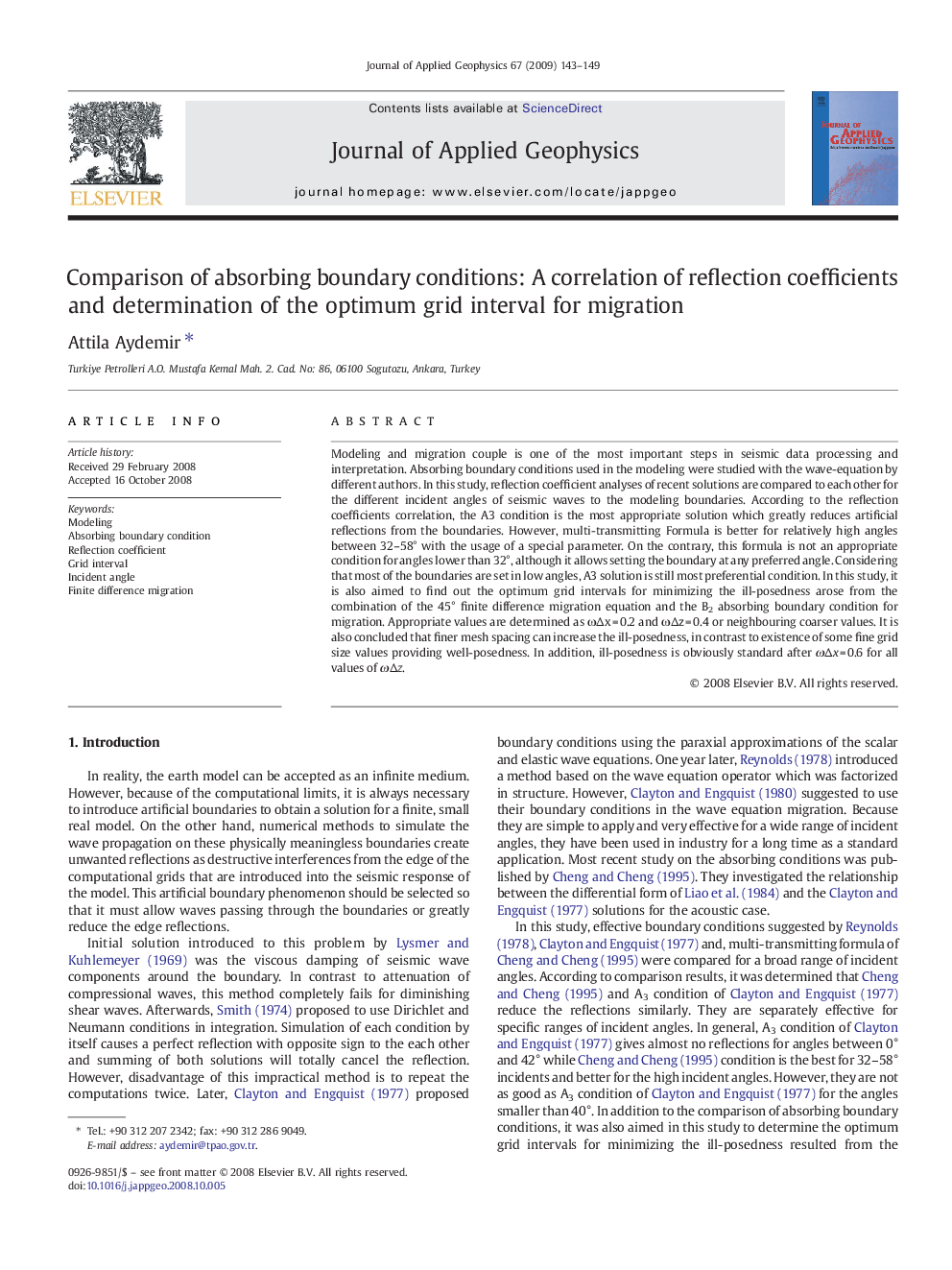| Article ID | Journal | Published Year | Pages | File Type |
|---|---|---|---|---|
| 4741054 | Journal of Applied Geophysics | 2009 | 7 Pages |
Abstract
Modeling and migration couple is one of the most important steps in seismic data processing and interpretation. Absorbing boundary conditions used in the modeling were studied with the wave-equation by different authors. In this study, reflection coefficient analyses of recent solutions are compared to each other for the different incident angles of seismic waves to the modeling boundaries. According to the reflection coefficients correlation, the A3 condition is the most appropriate solution which greatly reduces artificial reflections from the boundaries. However, multi-transmitting Formula is better for relatively high angles between 32-58° with the usage of a special parameter. On the contrary, this formula is not an appropriate condition for angles lower than 32°, although it allows setting the boundary at any preferred angle. Considering that most of the boundaries are set in low angles, A3 solution is still most preferential condition. In this study, it is also aimed to find out the optimum grid intervals for minimizing the ill-posedness arose from the combination of the 45° finite difference migration equation and the B2 absorbing boundary condition for migration. Appropriate values are determined as ÏÎx = 0.2 and ÏÎz = 0.4 or neighbouring coarser values. It is also concluded that finer mesh spacing can increase the ill-posedness, in contrast to existence of some fine grid size values providing well-posedness. In addition, ill-posedness is obviously standard after ÏÎx = 0.6 for all values of ÏÎz.
Related Topics
Physical Sciences and Engineering
Earth and Planetary Sciences
Geophysics
Authors
Attila Aydemir,
